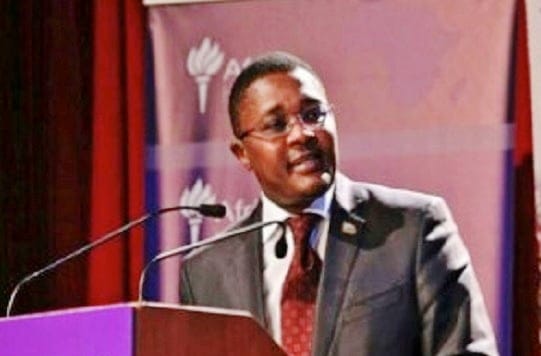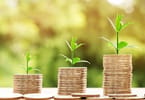Maamerika a laetse ho lula hae nakong ea Covid-19 seoa se qobelloa ho fumana mekhoa e mecha ea ho phetha mesebetsi ea bona ea letsatsi le letsatsi le ho nka nako ea bona ea mahala. Phuputso e ncha e lokollotsoeng kajeno e fana ka leseli la hore na koluoa ea coronavirus e ama lithahasello tsa lijo tsa batho ba baholo ba Amerika le boits'oaro joang, hammoho le monyetla oa litloaelo tsena tse ncha ho baka phetoho e sa feleng.
Bakeng sa phuputso ena, batho ba baholo ba Maamerika ba 1,005 ba ile ba hlahlojoa marang-rang mme ba botsoa ho bapisa litloaelo tsa bona tsa ho pheha le ho ja hona joale khahlanong le COVID-19, mme ba arolelane liphetoho tse hlahisang boits'epo ba bona ba ho pheha le thabo, metsoako, ts'ebeliso ea risepe, litšila tsa lijo, le tse ling.
Liphetho tse holimo li kenyelletsa:
Ka ho pheha lapeng le ho baka li ntse li eketseha, Ho itšepa ka kichineng le thabo ea ho pheha ho fofa
Phuputso e tiisa lipalo-palo hore Maamerika a pheha le ho baka ho feta joale, ka halofo ea bareki ba tlaleha hore ba pheha ho feta (54%), mme ba bakae ba baka (46%). Ha ts'ebeliso ea lijo tse lokiselitsoeng ka poso le lisebelisoa tsa lijo (22%) le ho laela ho tsamaisoa le ho tsamaisoa (30%) le hona ho ntse ho eketseha har'a bareki ba bang, sena se ntse se fokotsoa ke ho fokotseha ha boitšoaro bona ke ba bang (38% le 28%, ka ho latellana. ). Likotara tse tharo (75%) tsa batho bohle ba baholo ba Amerika ba phehang ho feta ba tlaleha hore ba itšepa haholoanyane ka kichineng (50%) kapa ba ithuta ho eketsehileng ka ho pheha mme ba qala ho haha boits'epo (26%). Ha se mosebetsi feela, kakaretso ea 73% e e natefeloa haholo (35%) kapa ho feta kamoo e neng e etsa pele (38%).
Maamerika a fetoha a makatsang le a boiqapelo ka kichineng
Bongata ba batho ba hlahlobiloeng ba sibolotse metsoako e mecha (38%) le lihlahisoa tse ncha (45%) mme ba boela ba fumana metsoako eo ba sa e sebeliseng nako e telele (24%). Ho sa le joalo, bareki ba ipolelang hore ba pheha khafetsa ba amohela mekhoa ena e mecha le ho feta ka cheseho (44%, 50% le 28%, ka ho latellana). Boqapi bo bongata, ka hoo e ka bang karolo ea boraro (34%) ea batho bohle ba baholo ba batlang lipepepe tse ngata le lijo tse tlamang (31%). Liresepe tse holimo tseo bareki ba li batlang ke litharollo tse bonolo, tse sebetsang tsa lijo (61%) le mekhoa ea ho sebelisa lisebelisoa tsa hajoale (60%), leha halofo ea bareki le eona e ntse e batla mekhoa ea ho pheha e phetseng hantle (47%) le ts'usumetso ea ho leka tse ncha lijo (45%). Ba fetang karolo ea boraro (35%) ea basebelisi ba risepe ba ntse ba batla projeke ea ho pheha le ts'usumetso ea ho ithuta mekhoa e mecha.
Malapa a ntse a senya lijo tse fokolang ka thuso ea li-recipe tse etselitsoeng ho sebelisa lisebelisoa tse teng
Phapusi ea ho bala ba fumane hore Maamerika a 57% a senya lijo tse fokolang ho feta pele ho koluoa ea coronavirus, mme 60% ea batho bohle ba baholo ba botsitsoe ba tlaleha hore ba batla lipepepe ho sebelisa metsoako eo ba nang le eona lijong tsa bona kapa sehatsetsing. Hona ba fumana li-recipe tsee kae? Mehloli e holimo e kenyelletsa libaka tsa marang-rang (66%), media oa sechaba (58%), le ba lelapa le metsoalle (52%), ka Facebook e etelletseng pakete e le sethala sa boiketlo ba sechaba bakeng sa diresepe, bakeng sa bohle ntle le Gen Z.
A pale ea likoto tse peli tsa thekeng? MaAmerika a arohana ka ho ja bophelo bo botle le ho ja lijo tse khotsofatsang le matšeliso
Hoo e ka bang lipalo tse ts'oanang tsa MaAmerika li tlaleha hore ba ja lijo tse phetseng hantle (39%) joalo ka ba fetolelang lijo tse khotsofatsang le tse khotsofatsang (40%). Ts'ebeliso ea lino tse tahang e ntse e ts'oana, ka likarolo tse lekanang tsa bareki ba noang veine / biri / meea (29%) joalo ka ho noa hanyane (25%), mme bongata ba ts'oereng ba tsitsitse (46%) ba noa ka mokhoa o ts'oanang le pele tlokotsi ya coronavirus. Bao ba noang boemo bo holimo ho 25-34 (33%) le malapeng a amohelang chelete e ngata (38% ho HH ka chelete ea $ 100K). Ho sa le joalo, ho ja lijo tse bobebe letsatsi lohle ho phahame ka linako tsohle, haholo-holo malapeng a nang le bana, ha halofo (50%) e tlaleha hore ba ja lijo tse bobebe ho feta pele.
Tloaelo e Ncha: Mekhoa ea ho pheha e amme nako e telele
Habohlokoa, hara MaAmerika a phehang ho feta, ba fetang halofo (51%) ba tlalehile hore ba tla tsoelapele ho etsa joalo ha koluoa ea coronavirus e fela. Bahlohlelletsi ba kaholimo ba kenyelletsa: ho pheha lapeng khafetsa ho boloka chelete (58%), ho pheha ho ba thusa ho ja ba phetse hantle (52%), ho leka diresepe tse ncha (50%), mme ba fumana ho pheha ho phomotse (50%).
Liphetho tsa boithuto li tiisa hore ha maemo a thatafala, Maamerika, ao khale a nkoang e le batho ba nang le ts'epo e felletseng, ba fumana mokhoa oa ho hlola mme ntlheng ena, ba khetha ho isa matla le boiqapelo ba bona kichineng, eseng feela ho fumana thabo ho mokhoa oa ho pheha, empa hape le melemo e tlisoang ke oona.
SEO U LOKELANG HO SE NKA HO SEHLOOHO ENA:
- A total of three-quarters (75%) of all American adults who are cooking more report that they are more confident in the kitchen (50%) or learning more about cooking and starting to build more confidence (26%).
- The study results confirm that when the going gets tough, the Americans, who were long regarded as consummate optimists, find a way to prevail and in this case, they are choosing to redirect their energy and creativity to the kitchen, not only….
- The study found that 57% of Americans are wasting less food than before the coronavirus crisis, with 60% of all adults polled reporting that they are looking for recipes to use the ingredients they have on hand in their pantry or refrigerator.























